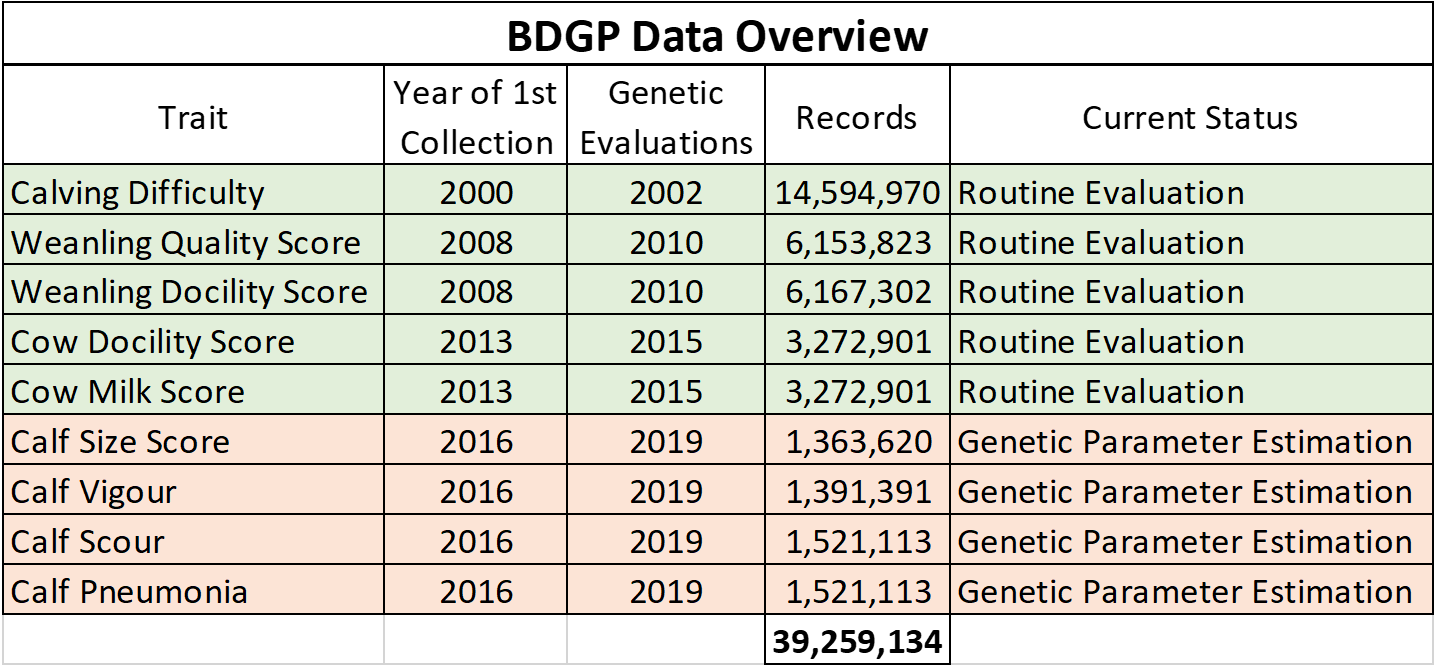It’s late, you’re tired and your inputting data as part of the BDGP scheme for ICBF. It’s a fair enough question to ask – what do they actually do with all the data?
Data Collection
To-date almost 40 million records have been recorded by Irish Farmers through the BDGP and its predecessor schemes across 9 traits. Thankfully, with the advancement of technology, the majority of this data is now recorded online.
Data Validation
For data to be included in a genetic evaluation it must first pass a few important tests:
- Sufficient data is available over multiple years.
- It proves to be a heritable trait.
- It has direct economic value or is useful as a predictor trait for other economically important traits.
- The genetics of the trait have been communicated to the wider industry in the form of heritability parameters and test evaluations. The last thing that anyone wants is to rush a new trait into an evaluation system without fully investigating what the knock-on effect will be in terms of €uro-Stars fluctuating etc.
- The trait has been built into the existing genetic evaluation pipelines.
As a result, the minimum amount of time for delivery of a new trait from time of first recording is 2 years (Table 1). So for a trait like ‘Calf Size’, that data is being tested for the above 5 criteria, as it would be in any other animal evaluation centre. This takes time. Then it can be included in the calving evaluations and farmers will have more accurate ‘calving difficulty’ evaluations from which to make their breeding decisions on.
This above practise of ‘Data validation’ it must be stressed is routine in animal evaluation centres across the world so ICBF is not anyway ‘late’ in transitioning from the initial ‘data collection’ phase to including that data in ‘routine genetic evaluations’. ICAR (International Committee for Animal Recording) is the body that oversees the validity of such data recording for all countries and ICBF is an extremely active participant in the ICAR organisation.

Conclusion
It is always important to remember that the ICBF database is full of data recorded by Irish farmers (including everyone in the house who helps record it!). ICBF uses this data to generate €uro-Stars with, from which you can make more accurate breeding decsions with. For example, if lots of farmers experience calving difficulties with a particular bull and record it, then ICBF can give that bull a high ‘Calving Difficulty %’ figure. This will then fore warn other farmers who are about to use that bull for the first time that he’s probably not a bull for heifers etc. So when you are recording the data ‘for ICBF’, you are recording it to benefit and help out each other.
This article has been prepared by ICBF in good faith on the basis of information provided to it. No representation or warranty expressed or implied is made or given by ICBF as to the accuracy, reliability, completeness of this article. ICBF shall not be liable for any losses (whether direct or indirect), damages, costs or expenses whatsoever, incurred or arising from any use of or reliance on this article or the information contained in it by any person.
